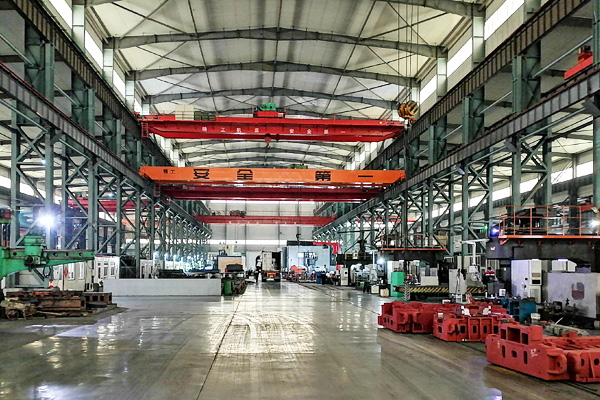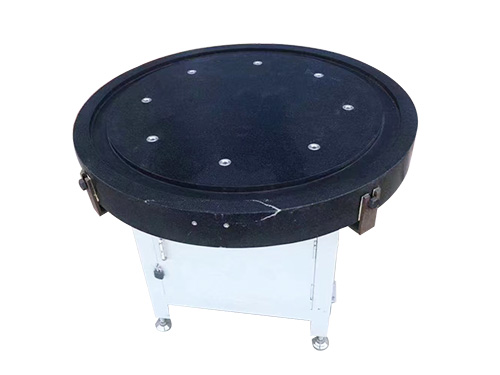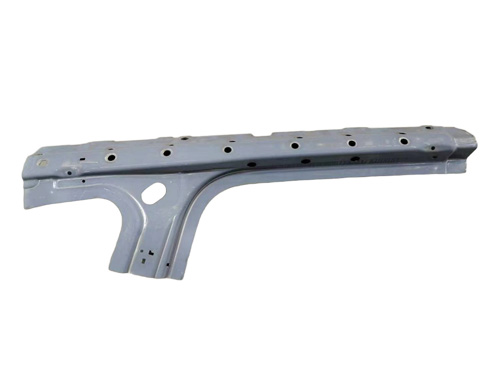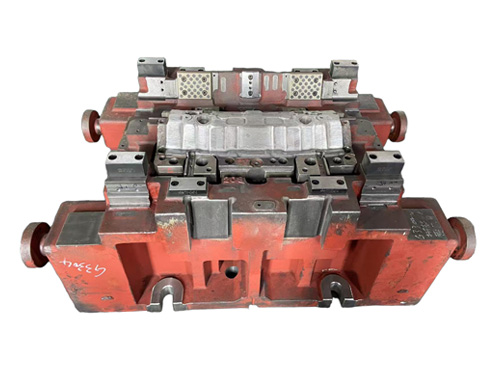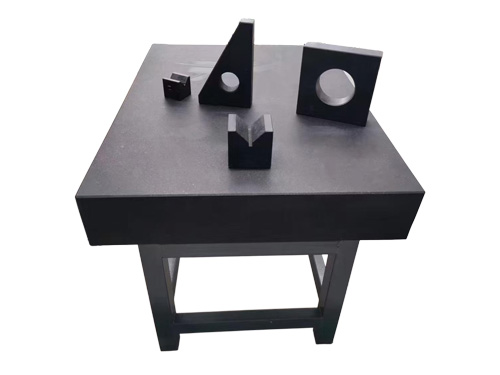News Detail
A Guide to Avoiding Pitfalls When Purchasing T-Slot Cast Iron Platforms: Details on Slot Spacing, Slot Depth, and Surface Treatment
author:hxrtools Time:2025-05-22 16:00:52 Click:51
In industrial production fields such as mechanical processing, assembly, and debugging, T-slot cast iron platforms have become indispensable basic tools due to their stability and practicality. However, the quality of products on the market varies widely. Improper choices regarding details like slot spacing, slot depth, and surface treatment will directly affect the platform's performance and service life. This article focuses on these key parameters, outlining key purchasing points to help you avoid potential pitfalls.
I.Introduction: The Industrial Value of T-Slot Cast Iron Platforms
1.1 Demand Trend for Basic Platforms in Industrial Production
As the manufacturing industry moves towards higher precision and efficiency, the requirements for the stability and accuracy of basic platforms in mechanical processing, mold manufacturing, equipment assembly, and other links are continuously increasing. T-slot cast iron platforms are in growing demand due to their strong load-bearing capacity and convenience for workpiece fixation.
1.2 Core Advantages of Cast Iron Platforms over Other Materials
Compared with materials like steel and aluminum alloy, cast iron platforms offer advantages such as lower cost, mature casting processes, and good shock absorption. The high rigidity and wear resistance of cast iron materials ensure the platform's stability during long-term use, providing a reliable reference for workpiece processing.
1.3 Core Focus of This Article: Pitfall Analysis of Slot Spacing, Slot Depth, and Surface Treatment
This article delves into common pitfalls in the purchasing process regarding the slot spacing, slot depth settings, and surface treatment processes of T-slot cast iron platforms, providing scientific methods for making purchasing decisions.
II.Basic Understanding of T-Slot Cast Iron Platforms
2.1 Device Definition and Functional Overview
A T-slot cast iron platform is a planar reference tool made of cast iron through casting and machining. The T-slots distributed on its surface can be used with tools like bolts and clamping plates to achieve rapid positioning and fixation of workpieces. It is widely used in scenarios such as mechanical processing, inspection, and scribing.
2.2 Key Component Characteristics
Cast Iron Material Characteristics: Cast iron has good casting performance and can be cast into complex shapes. The graphite structure within it gives the platform excellent shock absorption, effectively absorbing vibrations during processing and ensuring measurement and processing accuracy.
Platform Structural Design: Reasonable rib layout and box-type structural design enhance the platform's load-bearing capacity and rigidity, ensuring it is not easily deformed under heavy loads.
2.3 Mainstream Product Classifications
Classification by Accuracy Grade: Includes Grade 0, Grade 1, Grade 2, etc. Grade 0 has the highest accuracy and is suitable for high-precision measurement and calibration; Grades 1 and 2 have progressively lower accuracies, meeting the needs of general mechanical processing and assembly.
Classification by Purpose: Can be divided into measurement platforms, scribing platforms, assembly platforms, etc. Different types of platforms have differences in accuracy requirements and slot design.
2.4 Analysis of Key Technical Parameters
Flatness: Reflects the flatness of the platform's working surface and directly affects measurement and processing accuracy.
Load-Bearing Capacity: Determined by the platform's material, structure, and size. It is necessary to select an appropriate load-bearing specification based on the actual load during use.
Hardness: The hardness of cast iron affects the platform's wear resistance. Moderate hardness can extend the platform's service life.
III.Key Purchasing Points for Slot Spacing, Slot Depth, and Surface Treatment
3.1 Key Considerations for Slot Spacing Selection
Adapting to Workpiece Fixation Needs: The slot spacing should match the size of commonly used workpieces and bolt specifications to ensure that clamping plates and bolts can effectively fix the workpieces. Excessively wide slot spacing may prevent small workpieces from being securely installed, while excessively narrow spacing may limit the fixation methods for large workpieces.
Universality and Expandability: Choosing standard slot spacing specifications can improve the platform's compatibility with various fixtures and tools. At the same time, reserving some expansion space allows for flexible adjustments when processing workpieces of different sizes in the future.
3.2 Core Elements of Slot Depth Settings
Load-Bearing Weight and Stability: The slot depth should match the platform's load-bearing capacity. The heavier the load, the deeper the slot should be to ensure that bolts and clamping plates can provide sufficient clamping force and prevent workpieces from loosening during processing.
Impact on Machining Process and Accuracy: Excessively deep slots may affect the platform's overall rigidity and flatness. While meeting usage requirements, avoid excessive deepening of the slot depth, which could impact the platform's accuracy and service life.
3.3 Appropriate Selection of Surface Treatment Processes
Performance Differences of Different Treatment Processes: Common surface treatments include painting, applying anti-rust oil, and bluing. Painting can protect the platform's surface from rust but has limited wear resistance. Applying anti-rust oil is suitable for short-term protection. Bluing offers both anti-rust and wear-resistant properties.
Usage Environment and Service Life Requirements: Select a surface treatment process based on the usage environment. For example, in humid environments, a treatment method with strong anti-rust properties should be prioritized. For platforms used frequently, attention should be paid to surface wear resistance to extend the platform's service life.
3.4 Comprehensive Matching Strategy
Combining Budget and Usage Scenarios: With a limited budget, prioritize meeting core usage needs. For scenarios with high precision requirements, ensure that the platform's accuracy grade and slot design are appropriate. For general assembly scenarios, a balance between cost and performance can be achieved.
Avoiding Pitfalls of Parameter Mismatch: Prevent situations where slot spacing, slot depth, and actual needs are out of sync, leading to workpieces that cannot be fixed or insufficient platform load-bearing capacity. Be wary of mismatches between surface treatment processes and the usage environment, which could cause premature platform damage.
IV. Purchasing and Usage Recommendations
4.1 Supplier Selection and Quality Judgment
Evaluating Production Qualifications and Technical Strength: Prioritize suppliers with relevant production qualifications and quality management system certifications. Understand their production equipment and technological level to ensure stable product quality.
Distinguishing Product Quality: Observe whether the platform's surface is flat and free from casting defects such as sand holes and blowholes. Check whether the edges of the T-slots are neat and free from obvious burrs. Judge the material's density by tapping the platform.
4.2 Key Items for Inspection and Installation Notes
Key Items for Arrival Inspection: Verify whether the platform's dimensions and accuracy grade are consistent with the contract. Use a level to detect the platform's flatness. Check whether the spacing and depth of the T-slots meet the requirements.
Installation Environment and Steps: Install the platform in a dry and vibration-free environment. Adjust the shim plates to level the platform and ensure that each support point is evenly stressed.
4.3 Daily Maintenance and Fault Prevention
Maintenance Methods to Extend Service Life: Regularly clean iron filings and oil stains from the platform's surface to prevent impurities from entering the T-slots and affecting workpiece fixation. Apply anti-rust oil promptly after use to prevent rusting.
Preventive Measures for Common Problems: Avoid overloading the platform to prevent deformation due to uneven stress. Prohibit striking operations on the platform to protect the working surface's accuracy.
V. Industry Trends and Future Outlook
5.1 Technological Innovation Directions
Application of High-Precision Machining Technologies: In the future, T-slot cast iron platforms will adopt more advanced machining processes, such as CNC milling and grinding technologies, to improve slot accuracy and platform flatness, meeting high-precision manufacturing needs.
Trend of Intelligent Design: Incorporating sensor technology to achieve real-time monitoring of the platform's status, such as load warnings and deformation detection, enhancing usage safety and convenience.
5.2 Changes in Market Demand
Special Needs of Emerging Industries: With the development of emerging industries such as new energy vehicles and aerospace, higher requirements for corrosion resistance and lightweight platforms have been proposed, driving products towards customization and high performance.
Growing Trend of Personalized Customization: Users' personalized needs for platform size, slot layout, and surface treatment are increasing. Suppliers need to strengthen their custom service capabilities to meet diverse market demands.
5.3 Green Environmental Protection and Sustainable Development
Environmental Upgrades in Production Processes: Adopting green casting processes to reduce exhaust gas and wastewater emissions during production. Promoting the use of environmentally friendly surface treatment materials to reduce environmental pollution.
Resource Recycling and Reuse: Exploring recycling technologies for cast iron waste to improve resource utilization and promote sustainable development in the industry.
VI. Conclusion: Scientific Purchasing to Avoid Pitfalls
The details of slot spacing, slot depth, and surface treatment of T-slot cast iron platforms are key factors determining their performance. By mastering the purchasing points and pitfall avoidance guides in this article, you can effectively avoid risks caused by improper parameter selection. When purchasing, comprehensively consider actual needs, supplier qualifications, and product quality to select an appropriate platform and provide reliable guarantees for industrial production. If you still have questions about platform purchasing, welcome to explore more professional content and make informed procurement decisions.
 HOT PRODUCTS
HOT PRODUCTS
 CONTACT US
CONTACT US
—— E-mail:project@haoranmj.com
—— Whatsapp:+86 18932785670
—— Tel:+86 18932785670
—— Add:Across from Sanjing Distillery on Road 4, Botou Economic Development Zone, Cangzhou City, Hebei Province









